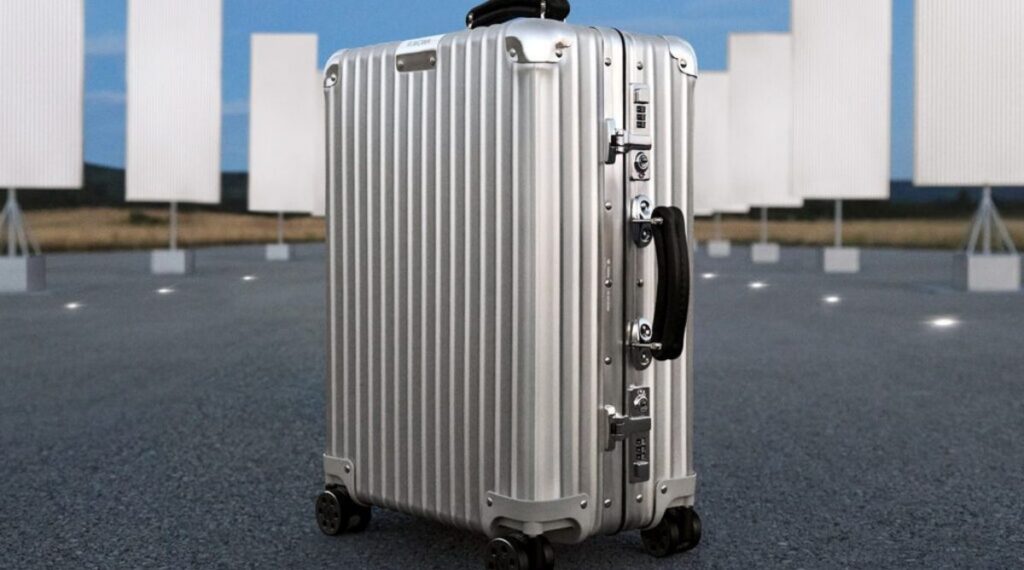How Much is 20 kg? 17+ Common Things That Weigh About 20 Kilograms (kg)
Ever wondered how much is 20 kg? You might be surprised to learn that it’s not just a number; it’s a weight that can impact your daily decisions, from grocery shopping to fitness goals.
We’ll break down the concept of 20 kg, providing useful insights and practical examples to enhance your comprehension. Get ready to explore the significance of this weight in various contexts and its impact on your life.
How Heavy is 20 Kg?
When pondering how heavy is 20 kg, one quickly realizes that while this weight may be manageable for adults in short bursts, it becomes a formidable challenge over long distances.

Equivalent to 44 pounds or about 3 stone, this weight can feel deceptively light when you first lift it. The initial surge of energy can trick you into thinking you’re more than capable, but as the minutes tick by and fatigue sets in, the reality of carrying such a load becomes apparent.
In the gym, 20 kilograms is a common benchmark, akin to the weights found on dumbbells and plates used for strength training. It serves as a reminder that what feels easy at first can transform into an exercise of endurance and mental fortitude.
Convert 20 Kilograms to Common Units
Understanding the conversion of 20 kilograms into other measurement systems not only enriches our grasp of weight but also enhances its practical application in daily life.
- 20 kilograms equals 20,000 grams.
- 20 kilograms equals 44.09 pounds.
- 20 kilograms equals 705.48 ounces.
- 20 kilograms equals 3.15 stone.
Common Things That Weigh 20 Kilograms
- A Standard Office Chair
- A Typical Twin-Size Mattress
- A Large Suitcase
- A Medium-Sized Microwave
- A Car Tire
- A Bag of 20 Pineapples
- A Typical E-Bike
- Half a Bag of Cement
- A Female Siberian Husky
- Three Average-Sized Pumpkins
- A Full Golf Bag with Clubs
- An Average Home Printer/Scanner Combo
- Two Large Watermelons
- A 5-6-Year-Old Kid
- 20 Liters of Water
- Five Large Domestic Cats
- Ten Bricks
A Standard Office Chair
Standard office chairs, weighing about 20kg, combine engineering with user comfort through sturdy materials. Their robust construction ensures durability and stability for long hours of use.

However, this weight can make moving them challenging, especially in practical situations like navigating stairs or relocating offices. The substantial weight highlights a trade-off between comfort and mobility, prompting consideration in modern office design. Acknowledging these factors can lead to better ergonomic choices in work environments.
A Typical Twin-Size Mattress
A Twin-size mattress generally weighs about 20kg, but this can vary due to materials and construction. Traditional innerspring mattresses may weigh differently from modern memory foam or latex options. This variance can leave many wondering what weighs 20kg? Knowing these weight differences is important for transport and storage considerations.

Twin mattresses, despite being lightweight, present challenges due to their awkward dimensions. Their narrow profile is suitable for small spaces but complicates maneuvering in tight areas like hallways and staircases.
Evenly distributing weight can still make them cumbersome, necessitating careful handling around corners and doorframes. However, modern materials have standardized mattress weights, helping consumers choose based on their needs.
A Large Suitcase
When traveling, luggage weight significantly affects your experience. Large suitcases, typically around 20 kg, hold essential items but present challenges. Made from sturdy materials like polycarbonate or aluminum, they protect belongings yet add weight.

With airlines enforcing a 20 kg limit, efficient packing is essential to avoid excess fees and airport stress. Selecting the right suitcase size, usually 70 to 80 cm and 90 to 120 liters in capacity, is vital.
Some premium suitcases even come equipped with built-in scales, providing an innovative solution for those wondering how much is 20 kg before heading to the airport. Thesen suitcases may include built-in scales to check weight. Smart packing and quality luggage enhance travel enjoyment by preventing overpacking and fees.
A Medium-Sized Microwave
The 20kg weight of an average medium-sized microwave is a testament to its robust construction and durable components. This weight reflects the intricate parts that ensure reliability and longevity, showcasing the engineering behind these devices.

Despite being less portable than lighter options, compact microwaves excel in performance, featuring multiple settings for reheating, defrosting, and cooking. They provide efficiency in meal prep without compromising quality. In a convenience-driven world, the sturdy 20kg microwave is a dependable ally for culinary tasks.
A Car Tire
A standard car tire weighs about 20 kilograms, essential for vehicle performance and safety. Its weight results from robust materials like rubber and steel, ensuring durability across various road conditions.

Different tire types, such as all-season, winter, and performance, vary in weight to meet specific driving needs. Tire weight is crucial during maintenance, influencing tool selection and tire balancing for optimal performance.
It also affects fuel efficiency; lighter tires can enhance gas mileage, while heavier ones provide better grip but may strain the engine. Michigan’s largest tire weighs over 12,000 kilograms, highlighting the diversity and functionality of tires.
A Bag of 20 Pineapples
Shopping for pineapples transforms into a puzzle of weight distribution and balance. Each unique fruit, weighing about one kilogram, presents handling challenges and highlights nature’s diversity.

Collecting 20 pineapples for 20 kilograms becomes an engaging experience, prompting reflection on their origins and cultivation. This journey enhances your appreciation for food, making each bite more meaningful.
A Typical E-Bike
Modern e-bikes weigh around 20kg, balancing sturdiness with portability. This weight is due to their strong frame, powerful motor, and battery, enhancing the riding experience. Although heavier than traditional bikes, e-bikes offer benefits like stability and performance on varied terrains. Most adults can manage a 20kg e-bike, considering its convenience.

It’s important to understand this weight for daily use, factoring in storage, transport options, and lifestyle. Whether navigating city streets or using public transport, knowing the weight aids in making informed decisions.
For most adults, managing a 20kg e-bike is entirely feasible, especially when considering the convenience it offers. Understanding how much is 20 kg in terms of daily use is crucial for anyone contemplating an e-bike purchase.
Half a Bag of Cement
When it comes to lifting cement bags, understanding how heavy is 20kg is vital for anyone involved in construction or DIY projects. Cement’s density can create a false perception of heaviness, risking improper lifting techniques and injury.

Recognizing this helps both novices and experts lift more cautiously. Weight distribution is vital when handling loads, as it can shift unexpectedly, affecting grip and balance.
Proper lifting methods, bending at the knees, keeping loads close, and using leg strength, are crucial for safety and efficiency. Mastering these techniques enhances confidence in projects involving cement, where every ounce matters.
A Female Siberian Husky
Healthy female Siberian Huskies typically weigh 18 to 25 kg, with an ideal weight of around 20 kg. This weight indicates a well-balanced physique characterized by lean muscle and a dense double coat. Their robust build allows for an active lifestyle filled with running and playing.

When lifted, their weight distribution highlights their muscle structure and body mechanics. Individual posture and activity levels can influence how their weight is perceived. Understanding these factors deepens our appreciation for Huskies and emphasizes the significance of maintaining their health and fitness for peak performance.
Three Average-Sized Pumpkins
Understanding pumpkin weight is vital during harvest season for farmers and enthusiasts. Three medium pumpkins typically weigh around 20kg, with each averaging 6-7kg, presenting unique challenges for activities like carving and decorating.

Proper handling techniques are crucial to avoid injury when lifting these heavy gourds for displays or community events. The weight also affects their use in festivities; heavier pumpkins can be used as centerpieces, while lighter ones are ideal for precise carvings.
As you prepare for Halloween and Thanksgiving, consider how the 20kg weight of your chosen pumpkins will impact your creative endeavors. Embracing this knowledge not only enhances your autumn experience but also deepens your appreciation for this beloved seasonal staple.
A Full Golf Bag with Clubs
A full golf club set, typically weighing around 20kg, includes various components like irons, woods, wedges, and a putter in a protective bag. The total weight can increase due to lightweight accessories such as golf balls and tees.

Modern golf clubs are designed with lighter materials to enhance performance without compromising quality. However, the overall weight remains significant when including the bag and other items.
For golfers, being aware of this weight helps improve mobility and game performance. Understanding the implications of a 20kg set allows players to make informed decisions about their equipment and carrying methods.
An Average Home Printer/Scanner Combo
When choosing a multifunction printer-scanner, weight (around 20kg) affects functionality and usability. This weight comes from durable internal components that ensure high-quality printing and scanning.

A robust outer casing adds to the weight, protecting sensitive parts and ensuring long-term reliability. However, this heft can complicate setup and relocation in home offices.
Understanding its implications aids in making informed placement decisions, enhancing workspace efficiency. Recognizing the impact of your printer-scanner’s weight helps create a more ergonomic and productive environment tailored to your needs.
Two Large Watermelons
Large watermelons weigh around 10kg each, allowing two to meet a 20kg target. Their high water content contributes to their unexpected heaviness.

Watermelons offer practical lessons in weight assessment during grocery shopping. However, their round shape and smooth surface can make them difficult to handle.
A 5-6-Year-Old Kid
Understanding the typical weight of a 5-6 year-old, around 20kg, helps parents choose suitable activities and equipment. This benchmark aids in selecting safe playground gear and appropriate bicycles or scooters for enjoyment.

Medical professionals use these weight metrics to assess children’s growth patterns, identifying potential health concerns early.
This proactive approach is akin to monitoring things that weigh 20kg, such as a small suitcase or a hefty sack of flour, as it provides a clear reference point for what is considered normal.
Recognizing these benchmarks enables parents to collaborate effectively with healthcare providers, ensuring their child’s development remains on track while making informed decisions about nutrition and physical activity.
20 Liters of Water
Water weight serves as a fascinating benchmark in the realm of weight measurement, offering a straightforward and consistent reference point. The fundamental principle that one liter of water equates to one kilogram not only simplifies calculations but also provides an intuitive grasp of weight.

This relationship becomes especially tangible when we consider larger volumes, such as 20 liters, which directly corresponds to a hefty 20 kilograms.
Imagine the heft of a large water cooler bottle, often found in offices and homes, holding approximately 20 liters. This common sight exemplifies the practical application of this weight class, transforming abstract measurements into relatable, everyday objects.
When you lift that bottle, you’re not just handling water; you’re engaging with a universally recognized standard that grounds our understanding of weight in something as essential as hydration.
Five Large Domestic Cats
When considering the weight of a large domestic cat, typically around 4kg, it’s fascinating to visualize how five cats together would weigh a substantial 20kg.

This comparison not only serves as a practical reference for pet owners but also highlights the importance of understanding the cumulative weight when transporting multiple pets or purchasing supplies.
Just as we might think of things that weigh 20kg, like a large dog food bag or a hefty piece of furniture, recognizing the collective weight of our furry companions can make logistics much easier.
Ten Bricks
Standard construction bricks weigh about 2kg each, making a stack of ten weigh approximately 20kg. This weight can be likened to carrying two bags of flour or a small dog, illustrating its manageable yet significant nature.

The uniformity and consistent weight of bricks provide reliability in construction, enabling architects and builders to predict performance and stability. Their compact size emphasizes the importance of density in perceiving weight.
While 20kg may seem heavy in bulk, the compactness allows for easier handling, showcasing the balance of strength and practicality in building materials. This design consideration simplifies logistics and enhances usability on-site.
Practical Applications of 20 kg Weight Understanding
Understanding 20kg equivalents enhances fitness and tasks like moving. This weight is ideal for strength gains without being overwhelming. Incorporating 20kg weights into workouts builds muscle endurance and functional strength, aiding real-world activities such as lifting.

Proper lifting techniques are crucial when handling 20kg objects to avoid injuries. Engage your core, keep your back straight, and use your legs for lifting. Planning movements by clearing pathways and ensuring a firm grip is also important.
By recognizing this manageable weight in fitness and moving, you protect your body and gain confidence in facing physical challenges.
Also Read How Long is 20 Feet?-(Visual Guide)
Safety Considerations When Lifting 20kg Objects
- Maintain proper posture and lifting technique with 20kg weights.
- Use legs, not back, for lifting.
- Consider shape and size of objects when lifting.
- Awkward dimensions can complicate the process.
- Seek assistance or use tools for safe heavy item movement.
Conclusion
Understanding how much is 20kg can greatly enhance our comprehension of various everyday objects and scenarios. Whether you’re lifting weights at the gym, cooking with ingredients, or shipping packages, recognizing this measurement can be quite useful.
For instance, 20 kg is roughly equivalent to the weight of a large dog or a small child, providing a tangible reference point for many. Knowing how to convert kilograms to pounds can further enrich your understanding, as 20 kg translates to approximately 44 pounds. Now you can encounter this weight, remember its significance and consider how it applies to your daily life.
FAQs
How Much is 20 kg in Weight?
To convert 20 kilograms to pounds, you can use the conversion factor where 1 kilogram is approximately equal to 2.20462 pounds.
Doing the math: 20 kg × 2.20462 lbs/kg = about 44.09 pounds. So, 20 kilograms is roughly equivalent to 44.1 pounds. This conversion is useful for understanding weights in different contexts.
What is the 20kg Hand Test Weight?
The 20kg hand test weight is a precision tool commonly used in various industries for calibrating scales and balance equipment. Made from heavy-duty cast iron, it ensures durability and stability, making it ideal for repeated use in testing and verification processes.
How Heavy is 20 kg in Weight?
Twenty kilograms (20 kg) is a unit of mass commonly used in the metric system. To put this into perspective, 20 kg is equivalent to approximately 44 pounds. This weight can be visualized as being similar to the weight of a medium-sized dog or a large bag of flour.
How Much is 20kg Roughly?
Twenty kilograms is approximately equivalent to 44.1 pounds. This conversion can be useful for those who are more familiar with the imperial system, as it helps in visualizing the weight in a context that may be more relatable. For instance, 20 kg is roughly the weight of a medium-sized dog or a large bag of flour.







